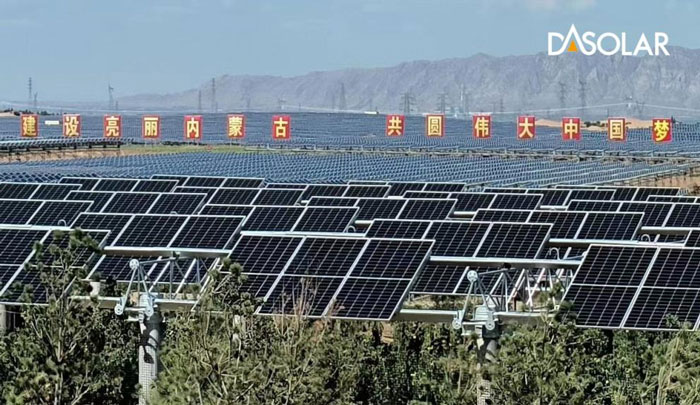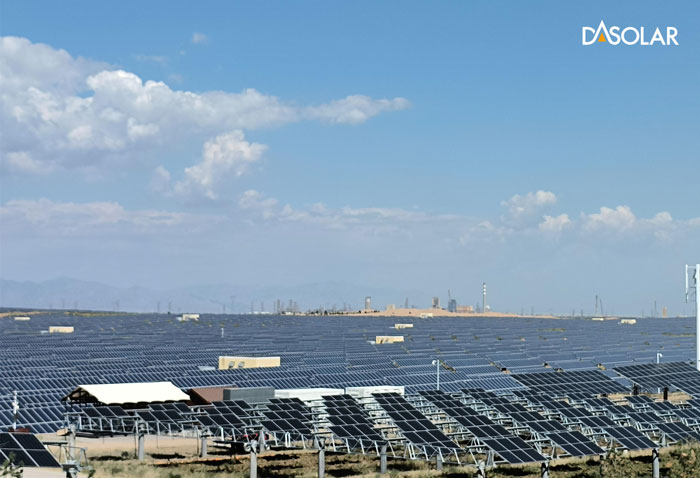DAS Solar supplies high-efficiency modules to China's largest single-unit ecological photovoltaic controlling desertification project
2023-11-10
DAS Solar, as the primary module supplier for the Hobq project, successfully supplied 1.52GW high-efficiency photovoltaic modules for the 2 GW photovoltaic controlling desertification project in the Hobq desert, Inner Mongolia recently. It is the largest single-unit ecological photovoltaic controlling desertification project in China.

Upon completion of the project, the average annual power generation capacity will be approximately 4.1 billion kWh, which is equivalent to saving 1.25 million tons of coal and reducing carbon dioxide emissions by 3.94 million tons. The project is also equipped with an ecological controlling desertification model, which will reduce the annual sand loss to the Yellow River by 2 million tons and repair and treat 13179 acres of desert.
The 2 GW photovoltaic controlling desertification project is located in Hobq desert at Mengxi Base, Ordos City, Inner Mongolia Autonomous Region. China's seventh-largest desert, the Hobq desert is suffering from severe desertification and soil erosion. DAS Solar's high-efficiency modules exhibit robust stability in the challenging desert environment, effectively overcoming interference from complex environmental factors.
It is remarkable that DAS Solar bifacial module delivers exceptional performance, which will offer cost-effective advantages,corrosion resistance and durability in the Hobq desert. Designed with a glass structure, bifacial modules are more durable, with zero permeability and higher fire resistance, which meet the diverse requirements of a variety of applications scenarios, while demonstrating their high reliability under extreme conditions. Furthermore, DAS Solar’s bifacial modules have a longer lifespan than traditional monofacial modules with polymer backs, resulting in a lifespan well over 30 years and greatly reducing power degradation.
Increasing global warming is leading to an increase in desertification, a major contributor to sandstorms. The use of photovoltaics for sand prevention and control has emerged as a new model for desertification management in recent years. It creates ecological "oases" in desert areas by combining photovoltaics with sand. In this project, modules generate green electricity, while breeding takes place in the middle and plants grow under the modules. The bifacial modules enhance power generation gains while simultaneously cultivating shade-tolerant high-quality forage and medicinal crops beneath the modules. The project achieves ecological transformation in the region by leveraging environmental characteristics such as temperature and light beneath modules. The project also breeding chickens and sheep between the modules. Afterward, livestock manure is used to reclaim land and control sand. Using this approach, desert areas can be improved in soil quality and vegetation coverage, degraded grasslands can be restored, and wind and sand-prone regions can be protected by a green ecological security barrier.

A significant improvement in sand control has been observed in the Hobq desert in recent years. The once desolate desert has gradually become a green landscape. New technological models have been utilized to control desertification and promote agrivoltaics, resulting in substantial economic and ecological benefits for the local community and driving high-quality development.






 浙公网安备33080302000236
浙公网安备33080302000236